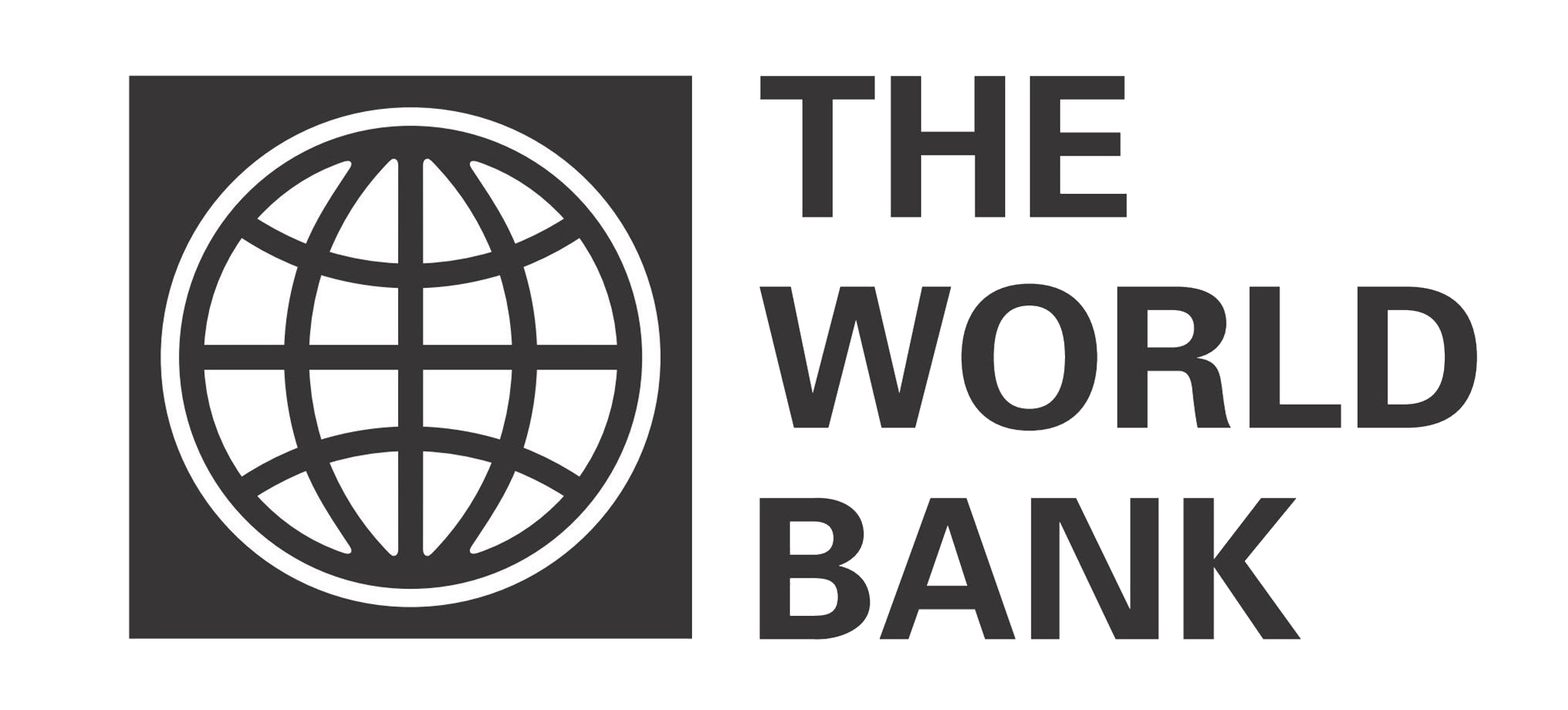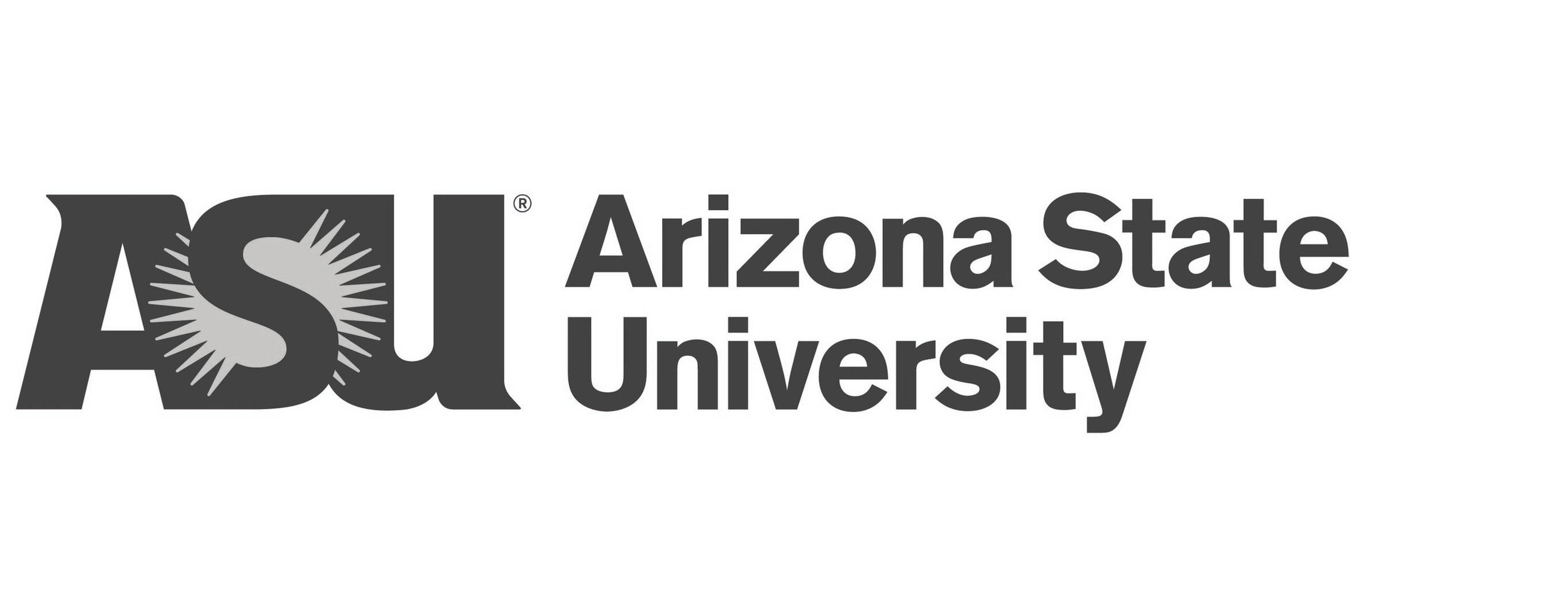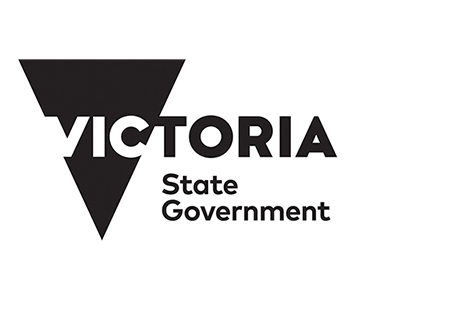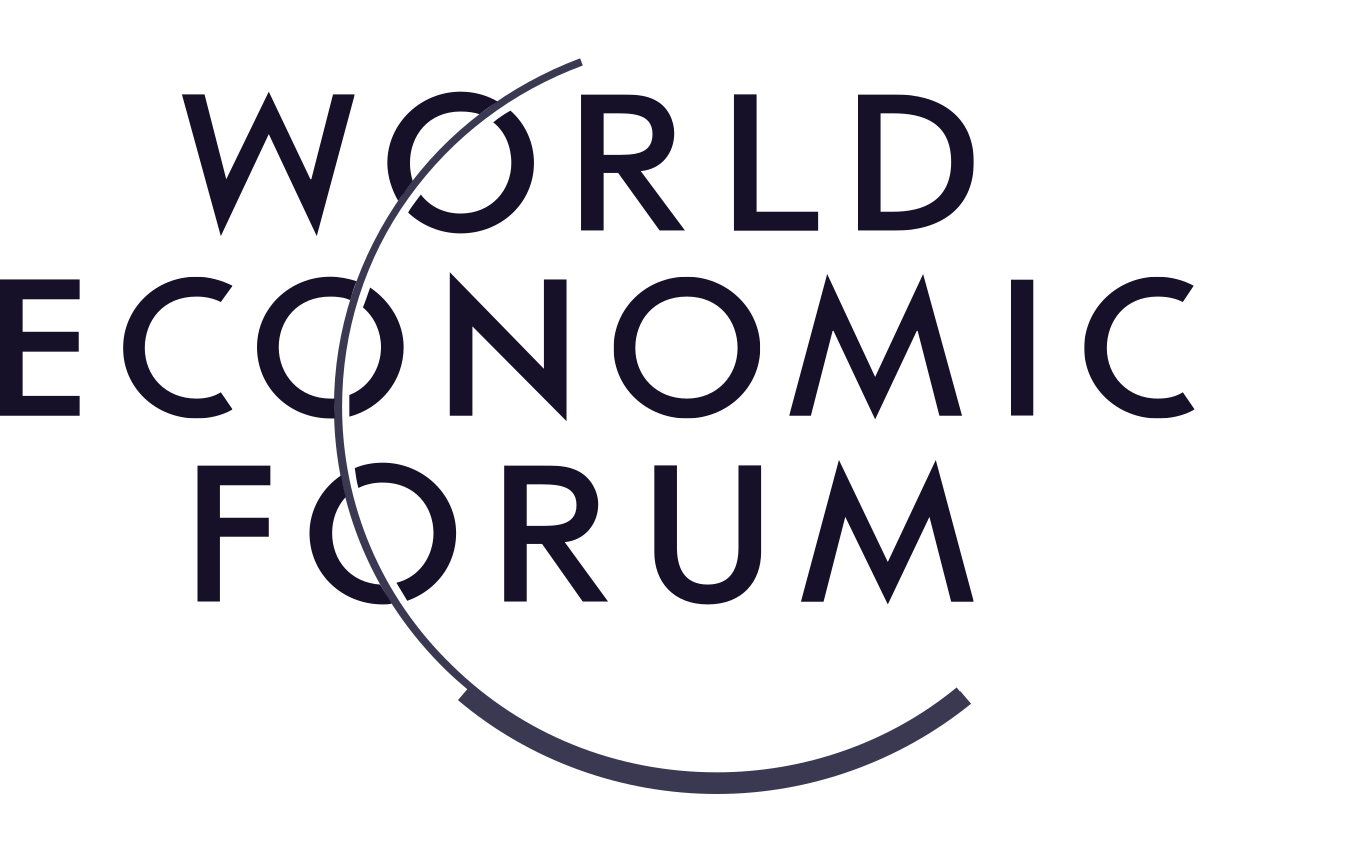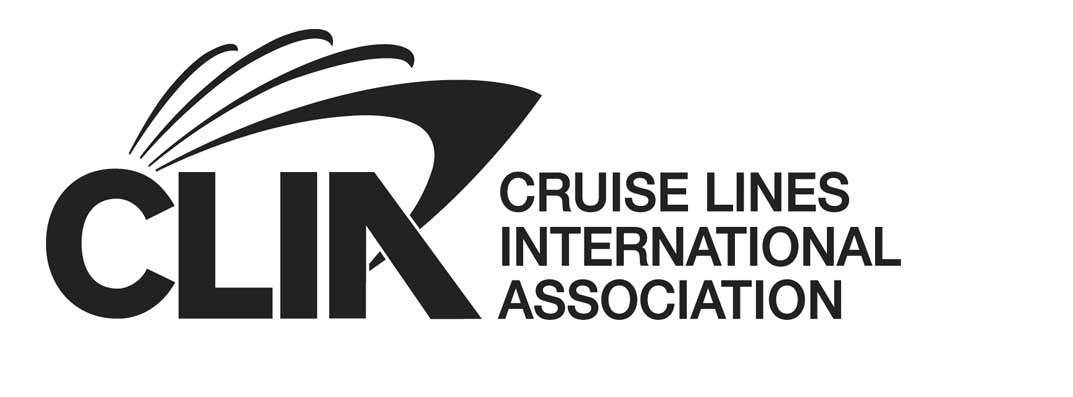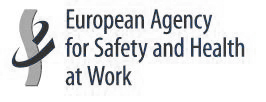Filters
Search Programme
Programme Categories
- Accessible Tourism ( 4 )
- Coronavirus (COVID-19) ( 10 )
- Economy ( 8 )
- Fashion ( 4 )
- Food & Beverage ( 1 )
- HOTREC ( 6 )
- Innovation and Entrepreneurship ( 2 )
- Law ( 1 )
- Policy Papers ( 4 )
- Reports ( 29 )
- Sustainability ( 4 )
- Tourism and Hospitality ( 3 )
- Trade and Development ( 7 )
- Transport and Mobility ( 2 )
In this twelfth annual edition, Tracking the trends 2020 once again features insights, strategies, and for- ward-thinking ideas that mining companies can leverage to learn how to lead from the front and navigate this uncertainty. In addition to sharing real-world case studies and examples, Deloitte’s global mining profes- sionals share a wealth of lessons learned that companies can draw upon to reposition for the future. Thank you sincerely for your ongoing support, and we invite you to share with us your input and feedback.
- 0
- 0
Every industrial revolution was catalyzed by a major technological evolution. Today is no different. With 90 percent of the world’s data having been produced in the last two years and more than 26 billion smart devices in circulation, we are living in an era of unprecedented technological innovation—one that has spurred the Fourth Industrial Revolution.
- 0
- 0
We live in times characterized by change and volatility, yet as businesses we need to make investment decisions that will equip us to serve markets and consumers as they will be in 10 years time and beyond. This report is ambitious.
By drawing together insights into economic and demographic trends, considerations of finite resources and sustainability, and the ever more dramatic impact of technology on our daily lives, it sets out to make some predictions about how our attitudes and patterns of consumption will change over the next decade.
By drawing together insights into economic and demographic trends, considerations of finite resources and sustainability, and the ever more dramatic impact of technology on our daily lives, it sets out to make some predictions about how our attitudes and patterns of consumption will change over the next decade.
- 0
- 0
The measurement, reporting and disclosure of greenhouse gas emissions are becoming more mainstream, especially among larger corporations, followed by smaller operators. Major initiatives originate from both the public and private sectors, indicating widespread recognition of the need to address climate change. Several global reporting frameworks and standards for carbon reporting exist, and compatibility of measurement and accounting between them is improving to facilitate greater uptake.
The benefits of carbon reporting are widely known, and include reduced operational costs, enhanced brand value and better risk management. There is evidence that an increasing number of Travel and Tourism companies are engaging in environmental and carbon reporting. However, considering the size of the sector and its annual growth rates, reporting levels are still comparatively low, and quality is often insufficient. This is particularly so for the measurement of indirect emissions, which can be substantial.
It is expected that, in response to increasing pressure from external stakeholders, as well as mandatory reporting requirements, more Travel and Tourism companies will follow the lead of a growing number of highly committed frontrunners. Third-party verification of emissions has become more central, either as part of compliance or to avoid external criticism, including from travellers. The participation of Travel and Tourism in global reporting is particularly important, considering increasing information on the carbon intensity of travel and the significant contribution of tourism emissions to national and global inventories.
A range of tourism-specific tools are already available to assist companies in their reporting efforts. Several tools also assist in the development of climate change mitigation initiatives. Providing evidence of sustainable practices is beneficial, considering that a large proportion of travellers are aware of climate change and the impacts of travel, although detailed knowledge is often lacking. It has been argued that carbon calculators arean important (educational) tool to provide information to travellers. While there are several tourism-specific carbon calculators, comparative research has found that they often lack consistency and transparency, possibly leading to confusion among users.
Research is inconclusive regarding individuals’ propensity to reduce emissions or to purchase ‘carbon offsets’. Empirical evidence suggests that an uptake of offsetting options is in the lower single-digit percentage of travellers. These are motivated by their knowledge about negative impacts, pro-environmental attitudes, self-image and social norms. Some companies directly offer offsetting to their customers, but the value of such initiatives has not been evaluated. Participation in carbon offsetting schemes could be enhanced by integrating offsetting with booking at the time of purchase. A transparent and consistent approach to calculating and selling offsets should be part of such a scheme, as it enhances both credibility and convenience – key aspects in travellers’ decision making.
In conclusion, a combination of industry leadership on reporting, disclosure and reduction, along with an enabling policy environment (including mandatory schemes), is needed to accelerate progress toward reducing greenhouse gas (GHG) emissions from the Travel and Tourism sector. Customer support for low- carbon products exists, but greater pressure from the travelling public is currently limited due to a combination of lack of willingness to change behaviour, incomplete knowledge about impacts and a lack of readily available and easy-to-understand options.
The benefits of carbon reporting are widely known, and include reduced operational costs, enhanced brand value and better risk management. There is evidence that an increasing number of Travel and Tourism companies are engaging in environmental and carbon reporting. However, considering the size of the sector and its annual growth rates, reporting levels are still comparatively low, and quality is often insufficient. This is particularly so for the measurement of indirect emissions, which can be substantial.
It is expected that, in response to increasing pressure from external stakeholders, as well as mandatory reporting requirements, more Travel and Tourism companies will follow the lead of a growing number of highly committed frontrunners. Third-party verification of emissions has become more central, either as part of compliance or to avoid external criticism, including from travellers. The participation of Travel and Tourism in global reporting is particularly important, considering increasing information on the carbon intensity of travel and the significant contribution of tourism emissions to national and global inventories.
A range of tourism-specific tools are already available to assist companies in their reporting efforts. Several tools also assist in the development of climate change mitigation initiatives. Providing evidence of sustainable practices is beneficial, considering that a large proportion of travellers are aware of climate change and the impacts of travel, although detailed knowledge is often lacking. It has been argued that carbon calculators arean important (educational) tool to provide information to travellers. While there are several tourism-specific carbon calculators, comparative research has found that they often lack consistency and transparency, possibly leading to confusion among users.
Research is inconclusive regarding individuals’ propensity to reduce emissions or to purchase ‘carbon offsets’. Empirical evidence suggests that an uptake of offsetting options is in the lower single-digit percentage of travellers. These are motivated by their knowledge about negative impacts, pro-environmental attitudes, self-image and social norms. Some companies directly offer offsetting to their customers, but the value of such initiatives has not been evaluated. Participation in carbon offsetting schemes could be enhanced by integrating offsetting with booking at the time of purchase. A transparent and consistent approach to calculating and selling offsets should be part of such a scheme, as it enhances both credibility and convenience – key aspects in travellers’ decision making.
In conclusion, a combination of industry leadership on reporting, disclosure and reduction, along with an enabling policy environment (including mandatory schemes), is needed to accelerate progress toward reducing greenhouse gas (GHG) emissions from the Travel and Tourism sector. Customer support for low- carbon products exists, but greater pressure from the travelling public is currently limited due to a combination of lack of willingness to change behaviour, incomplete knowledge about impacts and a lack of readily available and easy-to-understand options.
- 0
- 0
The COVID-19 pandemic presents an unprecedented humanitarian crisis which has quickly developed into a severe global economic downturn that will have long-lasting consequences. The travel and tourism sector was one of the first sectors to feel the impact and is one that will likely be among the last sectors to experience a meaningful recovery. There is substantial uncertainty on what will happen, and a lot will depend on exogenous factors such as the availability of a vaccine in the medium term, the health situation in key feeder markets and changing attitudes to travelling in the long-term across all segments including leisure, business and mass events.
What is clear, however, is that the road to recovery requires coordinated actions across all levels and stakeholders, local and abroad. The tourism sector, a key pillar of the economy, has a critical role to play in our economic recovery.
What is clear, however, is that the road to recovery requires coordinated actions across all levels and stakeholders, local and abroad. The tourism sector, a key pillar of the economy, has a critical role to play in our economic recovery.
- 0
- 0
Tourism is a powerful vehicle for economic growth and job creation all over the world. The tourism sector is directly and indirectly responsible (WTTC 2011) for 8.8 percent of the world’s jobs (258 million); 9.1 percent of the world’s GDP (US$6 trillion); 5.8 percent of the world’s exports (US$1.1 trillion); and 4.5 percent of the world’s investment (US$652 billion). The World Travel & Tourism Council estimates that 3.8 million jobs (including 2.4 million indirect jobs) could be created by the tourism industry in Sub- Saharan Africa (SSA) over the next 10 years.
- 0
- 0
The American tourism industry is thriving, International and domestic travel is currently contribution over $1.1 trillion to the United States GDP every year. When looking at the annual travel split of domestic and international travel, Americans domestically traveling within the country last year made up the lions share, totaling 2.29 Billion, a 2% increase from the previous year. Following past US tourism trends, the volume of Americans outbound traveling internationally was of course much less, amounting to 79.6 Million, which was a 3.5% increase from the previous year.
Leisure based travel accounts for 73.8% of all tourism in America, leaving 26.2% for business and other reasons. Overall the tourism expenditure accounts for $1,089 Billion a year, and the industry provides a direct source of employment for 5.29 million jobs. (Source: https://www.condorferries.co.uk/us-tourism-travel-statistics)
Leisure based travel accounts for 73.8% of all tourism in America, leaving 26.2% for business and other reasons. Overall the tourism expenditure accounts for $1,089 Billion a year, and the industry provides a direct source of employment for 5.29 million jobs. (Source: https://www.condorferries.co.uk/us-tourism-travel-statistics)
- 0
- 0
The world we are living in is experiencing a rapid transformation
Over the past decade, the Middle East has developed into a global hub for tourism and leisure. Visitors are attracted to the region’s retail offerings, hotels, beaches, and unique experiences such as a trip to the top of Burj Khalifa, Sheikh Zayed Grand Mosque in the UAE, Museum of Islamic Art in Qatar and the old-fashioned souks in Oman. However, new winds of change will require further transformation within the travel and tourism industry in the region.
PwC has identified 5 relevant fundamental shifts within the global landscape that are influencing a once-in-a-generation transformation within the travel and tourism industry.
Forces such as demographic and social change, a shift in global economic powers, rapid urbanisation, climate change and resource scarcity, and technological breakthroughs are presenting strong opportunities as well as their fair share of challenges to the travel and tourism industry, right now and in the coming future. So, how can the hospitality and tourism industry adapt in order to accommodate?
From changing the way we market our products to completely overhauling traditional concepts, we offer an insight and some solutions in order to thrive within this new normal.
Over the past decade, the Middle East has developed into a global hub for tourism and leisure. Visitors are attracted to the region’s retail offerings, hotels, beaches, and unique experiences such as a trip to the top of Burj Khalifa, Sheikh Zayed Grand Mosque in the UAE, Museum of Islamic Art in Qatar and the old-fashioned souks in Oman. However, new winds of change will require further transformation within the travel and tourism industry in the region.
PwC has identified 5 relevant fundamental shifts within the global landscape that are influencing a once-in-a-generation transformation within the travel and tourism industry.
Forces such as demographic and social change, a shift in global economic powers, rapid urbanisation, climate change and resource scarcity, and technological breakthroughs are presenting strong opportunities as well as their fair share of challenges to the travel and tourism industry, right now and in the coming future. So, how can the hospitality and tourism industry adapt in order to accommodate?
From changing the way we market our products to completely overhauling traditional concepts, we offer an insight and some solutions in order to thrive within this new normal.
- 0
- 0
We at BCG believe that the COVID-19 outbreak is first and foremost a societal crisis, threatening lives and the wellbeing of our global community. Society now, more than ever, needs to collaborate to protect people's lives and health, manage mid- term implications, and search for lasting solutions.
- 0
- 0
The "inconvenient truth" about climate change and its grave consequences has changed the perception of environmental topics. Certainly since the fall of 2006, with the publication of the Stern Review estimating the damage caused by global warming at 5% of GDP, or when AI Gore was awarded the Nobel Peace Prize in October 2007, the integration of our environmental and economic future has stopped being considered a sideshow for "alternative" energies, products, and strategies. Regardless of their size, industry, or region, companies are now developing "green" initiatives. And there is a new dimension. Companies are no longer mainly concerned with defending against external demands or conducting PR-/CSR activities to preserve their reputation but are rather engaged in economic activities to ensure their future, out of self-interest. It is no longer a matter of launching isolated "eco" activities or optimising business processes and divisions from the perspective of sustainability. Instead, it is strategically integrating sustainability in all corporate activities.
- 0
- 0
The fashion industry has a clear opportunity to act differently, pursu- ing profit and growth while also creating new value for society and there- fore for the world economy. It comes with an urgent need to place environ- mental, social, and ethical improvements on management’s agenda.
In recent decades, the fashion industry has been an engine for global development. One of the world’s largest consumer industries,1 generating €1.5 trillion in annual apparel and footwear revenues in 2016,2 it employs around 60 million people along its value chain.3
To continue the growth trajectory, the fashion industry needs to ad- dress its environmental and social footprint. The earth’s natural resourc- es are under pressure, and the fashion industry, although not the most obvious contributor, is a considerable one. Social conditions—also in the fashion industry—are far from those set forth in the United Nations’ goals for sustainable development. With current trajectories of production and consumption, these pressures will intensify by 2030 to the point of threat- ening industry growth itself.
With resources becoming even scarcer, the industry will face rising costs from labor to materials and energy. Based on conservative projec- tions, fashion brands’ profitability levels are at risk in the range of at least 3 percentage points if they don’t act determinedly, and soon.
The facts show a clear need for acting differently. The good news is that by changing practices, the industry can both stop the negative impact and generate a high amount of value for society, while also protecting profitability. We estimate that the world economy would gain about €160 billion annually if the fashion industry would successfully address those environmental and social issues.
As of today, the sustainability ‘pulse’ of the industry is weak. The new- ly developed global Pulse Score, a health measure for the sector (see page 28 for more details), is only 32 out of 100. The industry is not yet where it could and should be. The spread of performance is also quite large. The best performers on sustainability are the very big players as well as some mid-sized, family owned companies, while over half of the market, mainly small to medium-sized players, has shown little effort so far. The rest of the industry is somewhere in between. This is confirmed by the Pulse Survey (further information on pages 35/36), where two-thirds of polled fashion executives have not made environmental and social factors guiding princi- ples for their companies’ strategy.
Fashion brands with targeted initiatives will be best placed to improve their environmental and social footprint and counteract the rising costs of apparel production. They will pull ahead of their competitors with innova- tive ways of doing business and efficient production techniques that min- imize the use of water, energy, and land, as well as hazardous chemicals. By realizing better working conditions and improving workers’ safety, they will minimize their operational and reputational risks and create significant value for themselves and the world economy. These initiatives will improve the overall industry Pulse, raising the average and creating inspiring best practices for the low performers to learn from.
However, even if the entire industry caught up to the best practice front-runners, it would not be enough. Under optimistic and ambitious as- sumptions, only less than half of the €160 billion could be captured.4 The industry needs coordinated action beyond today’s solutions. This report explains the size of the challenge and the need for innovation, collabora- tion and supporting regulatory action to close the gap.
This first edition of the Report on the Pulse of the Fashion Indus- try exposes the challenges in a number of sustainability impact areas and along the industry’s value chain, from design and development to end-of- life for apparel and footwear. It aims to provide transparency on the indus- try’s stance in terms of its environmental, social, and ethical footprints— topics that have been much debated, yet without a common baseline and framework against which to evaluate change. It also reviews ways in which the industry can maintain and even strengthen its profitability despite the pressures of rising costs.
The overarching objective of the report is to provide a direction and guidance towards a better fashion industry. As a starting point, the report provides a common fact base on the current sustainability performance of the industry. Based on that it lays out a Landscape for Change and pre- sents pragmatic, concrete, and economical actions that are already availa- ble for producing palpable change. The report promotes collaboration and innovation as main drivers to accelerate change.
In recent decades, the fashion industry has been an engine for global development. One of the world’s largest consumer industries,1 generating €1.5 trillion in annual apparel and footwear revenues in 2016,2 it employs around 60 million people along its value chain.3
To continue the growth trajectory, the fashion industry needs to ad- dress its environmental and social footprint. The earth’s natural resourc- es are under pressure, and the fashion industry, although not the most obvious contributor, is a considerable one. Social conditions—also in the fashion industry—are far from those set forth in the United Nations’ goals for sustainable development. With current trajectories of production and consumption, these pressures will intensify by 2030 to the point of threat- ening industry growth itself.
With resources becoming even scarcer, the industry will face rising costs from labor to materials and energy. Based on conservative projec- tions, fashion brands’ profitability levels are at risk in the range of at least 3 percentage points if they don’t act determinedly, and soon.
The facts show a clear need for acting differently. The good news is that by changing practices, the industry can both stop the negative impact and generate a high amount of value for society, while also protecting profitability. We estimate that the world economy would gain about €160 billion annually if the fashion industry would successfully address those environmental and social issues.
As of today, the sustainability ‘pulse’ of the industry is weak. The new- ly developed global Pulse Score, a health measure for the sector (see page 28 for more details), is only 32 out of 100. The industry is not yet where it could and should be. The spread of performance is also quite large. The best performers on sustainability are the very big players as well as some mid-sized, family owned companies, while over half of the market, mainly small to medium-sized players, has shown little effort so far. The rest of the industry is somewhere in between. This is confirmed by the Pulse Survey (further information on pages 35/36), where two-thirds of polled fashion executives have not made environmental and social factors guiding princi- ples for their companies’ strategy.
Fashion brands with targeted initiatives will be best placed to improve their environmental and social footprint and counteract the rising costs of apparel production. They will pull ahead of their competitors with innova- tive ways of doing business and efficient production techniques that min- imize the use of water, energy, and land, as well as hazardous chemicals. By realizing better working conditions and improving workers’ safety, they will minimize their operational and reputational risks and create significant value for themselves and the world economy. These initiatives will improve the overall industry Pulse, raising the average and creating inspiring best practices for the low performers to learn from.
However, even if the entire industry caught up to the best practice front-runners, it would not be enough. Under optimistic and ambitious as- sumptions, only less than half of the €160 billion could be captured.4 The industry needs coordinated action beyond today’s solutions. This report explains the size of the challenge and the need for innovation, collabora- tion and supporting regulatory action to close the gap.
This first edition of the Report on the Pulse of the Fashion Indus- try exposes the challenges in a number of sustainability impact areas and along the industry’s value chain, from design and development to end-of- life for apparel and footwear. It aims to provide transparency on the indus- try’s stance in terms of its environmental, social, and ethical footprints— topics that have been much debated, yet without a common baseline and framework against which to evaluate change. It also reviews ways in which the industry can maintain and even strengthen its profitability despite the pressures of rising costs.
The overarching objective of the report is to provide a direction and guidance towards a better fashion industry. As a starting point, the report provides a common fact base on the current sustainability performance of the industry. Based on that it lays out a Landscape for Change and pre- sents pragmatic, concrete, and economical actions that are already availa- ble for producing palpable change. The report promotes collaboration and innovation as main drivers to accelerate change.
- 0
- 0
This report examines the multifaceted roles that digital learning plays from the perspectives of practitioners who lead the field. Each case study offers not just anecdotes, but quantitative measures designed to help institutional leaders understand and evaluate the real-world im- plications of efforts that are underway across a range of institution types.
- 0
- 0
The 2019 edition of the Travel & Tourism Competitiveness Report features the latest iteration of the Travel & Tourism Competitiveness Index (TTCI). Published biennially,
the TTCI benchmarks the T&T competitiveness of 140 economies and measures “the set of factors and policies that enable the sustainable development of the Travel
& Tourism (T&T) sector, which in turn, contributes to the development and competitiveness of a country.”
The Travel & Tourism Competitiveness Report is a flagship product of the World Economic Forum’s Platform for Shaping the Future of Mobility, which brings together world leaders to ensure travel and transportation systems meet 21st century demands. This report serves as a strategic benchmarking tool for policy-makers, companies and complementary sectors to advance the future development of the T&T sector by providing unique insight into the strengths and development areas of each country/ economy to enhance industry competitiveness. Further, it serves as a platform for multi stakeholder dialogue to understand and anticipate emerging trends and risks in global travel and tourism, adapt their policies, practices and investment decisions, and accelerate new models that ensure the longevity of this important sector. The index is comprised of four subindexes, 14 pillars and 90 individual indicators, distributed among the different pillars.
the TTCI benchmarks the T&T competitiveness of 140 economies and measures “the set of factors and policies that enable the sustainable development of the Travel
& Tourism (T&T) sector, which in turn, contributes to the development and competitiveness of a country.”
The Travel & Tourism Competitiveness Report is a flagship product of the World Economic Forum’s Platform for Shaping the Future of Mobility, which brings together world leaders to ensure travel and transportation systems meet 21st century demands. This report serves as a strategic benchmarking tool for policy-makers, companies and complementary sectors to advance the future development of the T&T sector by providing unique insight into the strengths and development areas of each country/ economy to enhance industry competitiveness. Further, it serves as a platform for multi stakeholder dialogue to understand and anticipate emerging trends and risks in global travel and tourism, adapt their policies, practices and investment decisions, and accelerate new models that ensure the longevity of this important sector. The index is comprised of four subindexes, 14 pillars and 90 individual indicators, distributed among the different pillars.
- 0
- 0
Travel & Tourism is one of the world's great industrial sectors. It drives economic growth, creates jobs, improves social development and promotes peace. Hundreds of millions of people around the world are dependent on the sector for their employment. In some island economies, Travel & Tourism is not just the biggest employer, it is effectively the only employer. Our role in contributing to the creation of sustainable economies and as a transformative force for improving millions of lives was recognised by the United Nations, which designated 2017 as the International Year of Sustainable Tourism for Development. When properly managed, Travel & Tourism is undoubtedly a force for good in the world.
Travel & Tourism is a diverse sector consisting of millions of companies and employers - from the biggest global travel brands to the smallest tour operator or hostel owner. Together we form a formidable force with a voice to be heard at the highest levels of society and government.
Uniting Travel represents the major global Travel & Tourism organisations, and supports the sector in speaking with 'One Voice' on the most important issues. Formed in 2012 as the Global Travel Association Coalition, our role is to align communications, advocacy and action to leverage the power of the sector so that Travel & Tourism is recognised as a driver of sustainable and inclusive economic growth and development. With this in mind, we are proud to present our first publication in a series, Travel & Tourism - A Force for Good in the World, which focuses on the sector's global economic impact. An upcoming report to be released in the summer of 2018 will look at Travel & Tourism for a more sustainable world.
We hope that this compilation of research on the benefits of Travel & Tourism is a useful resource for the members of Uniting Travel, their members, and any other parties interested in the powerful and positive impact of the Travel & Tourism sector and its related industries, including aviation, cruise, hotels and resorts, and car rental. Travel & Tourism - A Force for Good in the World aims to provide an overview of the benefits that the sector yields, while breaking it down by industry and bringing together the key facts and figures in one document.
We would like to take this opportunity to thank all of our members including, Airports Council International, Cruise Lines International Association, International Air Transport Association, International Civil Aviation Organization, Pacific Asia Travel Association, World Tourism Organization, World Economic Forum and World Travel & Tourism Council, for their engagement and support. We would also like to thank STR Global for the provision of data on the hotels market. In particular, we would like to thank Ms Gloria Guevara, Chair of Uniting Travel, for her invaluable guidance and vision.
Travel & Tourism is a diverse sector consisting of millions of companies and employers - from the biggest global travel brands to the smallest tour operator or hostel owner. Together we form a formidable force with a voice to be heard at the highest levels of society and government.
Uniting Travel represents the major global Travel & Tourism organisations, and supports the sector in speaking with 'One Voice' on the most important issues. Formed in 2012 as the Global Travel Association Coalition, our role is to align communications, advocacy and action to leverage the power of the sector so that Travel & Tourism is recognised as a driver of sustainable and inclusive economic growth and development. With this in mind, we are proud to present our first publication in a series, Travel & Tourism - A Force for Good in the World, which focuses on the sector's global economic impact. An upcoming report to be released in the summer of 2018 will look at Travel & Tourism for a more sustainable world.
We hope that this compilation of research on the benefits of Travel & Tourism is a useful resource for the members of Uniting Travel, their members, and any other parties interested in the powerful and positive impact of the Travel & Tourism sector and its related industries, including aviation, cruise, hotels and resorts, and car rental. Travel & Tourism - A Force for Good in the World aims to provide an overview of the benefits that the sector yields, while breaking it down by industry and bringing together the key facts and figures in one document.
We would like to take this opportunity to thank all of our members including, Airports Council International, Cruise Lines International Association, International Air Transport Association, International Civil Aviation Organization, Pacific Asia Travel Association, World Tourism Organization, World Economic Forum and World Travel & Tourism Council, for their engagement and support. We would also like to thank STR Global for the provision of data on the hotels market. In particular, we would like to thank Ms Gloria Guevara, Chair of Uniting Travel, for her invaluable guidance and vision.
- 0
- 0
The COVID-19 pandemic has caused significant disruptions in the global economy.
By the end of the first quarter of 2020, the COVID-19 pandemic had brought international travel to an abrupt halt and significantly impacted the tourism industry. For many developed and developing countries, the tourism sector is a major source of employment, government revenue and foreign exchange earnings. Without this vital lifeline, many countries may experience a dramatic contraction in GDP and a rise in unemployment. Using a computable general equilibrium model (GTAP), we assess the implications of the COVID-19 crisis on the tourism sector. Depending on the duration of the global lockdown, the paper estimates the direct and indirect costs of the shutdown for 65 individual countries and regions and
65 sectors, covering the global economy. In some countries, unemployment could rise by more than 20 percentage points and some sectors could nearly be wiped out if the duration of the tourism standstill is up to one year. Further the paper puts forward policy recommendations for governments to avert the worst effects and facilitate recovery.
By the end of the first quarter of 2020, the COVID-19 pandemic had brought international travel to an abrupt halt and significantly impacted the tourism industry. For many developed and developing countries, the tourism sector is a major source of employment, government revenue and foreign exchange earnings. Without this vital lifeline, many countries may experience a dramatic contraction in GDP and a rise in unemployment. Using a computable general equilibrium model (GTAP), we assess the implications of the COVID-19 crisis on the tourism sector. Depending on the duration of the global lockdown, the paper estimates the direct and indirect costs of the shutdown for 65 individual countries and regions and
65 sectors, covering the global economy. In some countries, unemployment could rise by more than 20 percentage points and some sectors could nearly be wiped out if the duration of the tourism standstill is up to one year. Further the paper puts forward policy recommendations for governments to avert the worst effects and facilitate recovery.
COVID-19 and Tourism

Free
- 0
- 0
The deep and widespread economic and social damage caused by the global financial crisis has been followed, in most advanced economies, by a decade of austerity, sluggish productivity growth and stagnant real wages. Growth has also slowed in most developing countries, albeit with considerable variation across regions. The struggle to create good jobs has intensified, with rapid urbanization, premature deindustrialization and rural stagnation accompanying rising inequality and growing political tensions.
Everywhere, anxiety over the prospect of increasing economic insecurity is compounded by the impending threat of environmental breakdown. The Intergovernmental Panel on Climate Change has recently raised the stakes by starting the clock on a climate meltdown; but a shortening time horizon is just part of a growing recognition of a wider and deeper ecological crisis.
Efforts to address these challenges have aligned around a series of goals and targets, which the international community agreed in 2015, to ensure an inclusive and sustainable future for all people and the planet. But with little more than a decade left to achieve Agenda 2030, meeting these goals has already fallen behind schedule and there is broad agreement that what is now required is a coordinated investment push on an unprecedented scale and across the entire global commons. The financing numbers are daunting, from “billons to trillions”, requiring an additional 2.5 trillion dollars a year, just in developing countries, on UNCTAD estimates.
A decade ago at the G20 gathering in London, the world’s major economies came together to stem the global financial panic triggered by the collapse of the sub-prime mortgage market in the United States and to establish a more stable growth path going forward. Their talk of a fresh start was an acknowledgement that the existing multilateral system had failed to provide both the resources and the coordination needed to underpin stable markets and a healthy investment climate.
A decade on, that effort has stalled, leaving those tasked with meeting the SDGs wondering whether the multilateral system is fit for purpose. Their concern is compounded by the deteriorating state of the global economy. Increased disagreements over trade rules, currency movements and technology flows are fostering uncertainty and instability, draining trust from the multilateral system at the very moment consensus and coordination are key to scaling up the resources needed to meet the massive economic, social and environmental challenges we all face.
This year’s Trade and Development Report suggests that meeting the financing demands of the Agenda 2030 requires rebuilding multilateralism around the idea of a Global Green New Deal, and pursuing a financial future very different from the recent past. The place to begin building such a future is with a serious discussion of public financing options, as part of a wider process of repairing the social contract on which inclusive and sustainable outcomes can emerge and from which private finance can be engaged on more socially productive terms.
Everywhere, anxiety over the prospect of increasing economic insecurity is compounded by the impending threat of environmental breakdown. The Intergovernmental Panel on Climate Change has recently raised the stakes by starting the clock on a climate meltdown; but a shortening time horizon is just part of a growing recognition of a wider and deeper ecological crisis.
Efforts to address these challenges have aligned around a series of goals and targets, which the international community agreed in 2015, to ensure an inclusive and sustainable future for all people and the planet. But with little more than a decade left to achieve Agenda 2030, meeting these goals has already fallen behind schedule and there is broad agreement that what is now required is a coordinated investment push on an unprecedented scale and across the entire global commons. The financing numbers are daunting, from “billons to trillions”, requiring an additional 2.5 trillion dollars a year, just in developing countries, on UNCTAD estimates.
A decade ago at the G20 gathering in London, the world’s major economies came together to stem the global financial panic triggered by the collapse of the sub-prime mortgage market in the United States and to establish a more stable growth path going forward. Their talk of a fresh start was an acknowledgement that the existing multilateral system had failed to provide both the resources and the coordination needed to underpin stable markets and a healthy investment climate.
A decade on, that effort has stalled, leaving those tasked with meeting the SDGs wondering whether the multilateral system is fit for purpose. Their concern is compounded by the deteriorating state of the global economy. Increased disagreements over trade rules, currency movements and technology flows are fostering uncertainty and instability, draining trust from the multilateral system at the very moment consensus and coordination are key to scaling up the resources needed to meet the massive economic, social and environmental challenges we all face.
This year’s Trade and Development Report suggests that meeting the financing demands of the Agenda 2030 requires rebuilding multilateralism around the idea of a Global Green New Deal, and pursuing a financial future very different from the recent past. The place to begin building such a future is with a serious discussion of public financing options, as part of a wider process of repairing the social contract on which inclusive and sustainable outcomes can emerge and from which private finance can be engaged on more socially productive terms.
- 0
- 0
Global flows of foreign direct investment (FDI) will be under severe pressure this year as a result of the COVID-19 pandemic. These vital resources are expected to fall sharply from 2019 levels of $1.5 trillion, dropping well below the trough reached during the global financial crisis and undoing the already lackluster growth in international investment over the past decade. Flows to developing countries will be hit especially hard, as export-oriented and commodity-linked investments are among the most seriously affected.
The consequences could last well beyond the immediate impact on investment flows. Indeed, the crisis could be a catalyst for a process of structural transformation of international production this decade, and an opportunity for increased sustainability, but this will depend on the ability to take advantage of the new industrial revolution and to overcome growing economic nationalism. Cooperation will be crucial; sustainable development depends on a global policy climate that remains conducive to cross-border investment.
The World Investment Report, now in its thirtieth year, supports policymakers by monitoring global and regional FDI trends and documenting national and international investment policy developments. This year’s Report naturally takes stock of the COVID-19 crisis. It also includes a new chapter, added at the request of the UN General Assembly, on investment in the Sustainable Development Goals. This analysis shows that international private sector flows to four out of ten key SDG areas have failed to increase substantially since the adoption of the goals in 2015. With less than a decade left to the agreed deadline of 2030, this makes it all the more important to evaluate the implications of the expected changes in the investment landscape over the coming years.
As such, this year’s World Investment Report is required reading for policymakers and an important tool for the international development community. I commend its information and analysis to a wide global audience.
The consequences could last well beyond the immediate impact on investment flows. Indeed, the crisis could be a catalyst for a process of structural transformation of international production this decade, and an opportunity for increased sustainability, but this will depend on the ability to take advantage of the new industrial revolution and to overcome growing economic nationalism. Cooperation will be crucial; sustainable development depends on a global policy climate that remains conducive to cross-border investment.
The World Investment Report, now in its thirtieth year, supports policymakers by monitoring global and regional FDI trends and documenting national and international investment policy developments. This year’s Report naturally takes stock of the COVID-19 crisis. It also includes a new chapter, added at the request of the UN General Assembly, on investment in the Sustainable Development Goals. This analysis shows that international private sector flows to four out of ten key SDG areas have failed to increase substantially since the adoption of the goals in 2015. With less than a decade left to the agreed deadline of 2030, this makes it all the more important to evaluate the implications of the expected changes in the investment landscape over the coming years.
As such, this year’s World Investment Report is required reading for policymakers and an important tool for the international development community. I commend its information and analysis to a wide global audience.
- 0
- 0
The Least Developed Countries Report provides a comprehensive and authoritative source of socio-economic analysis and data on the world's most impoverished countries.
The Report is intended for a broad readership of governments, policy makers, researchers and all those involved with LDCs' development policies.
Most Reports contains a statistical annex, which provides basic data on the LDCs.
The Report is intended for a broad readership of governments, policy makers, researchers and all those involved with LDCs' development policies.
Most Reports contains a statistical annex, which provides basic data on the LDCs.
- 0
- 0
The Economic Development in Africa report analyses major aspects of Africa´s development problems and policy issues of interest to African countries. It makes policy recommendations for action by African countries themselves and by the international community to overcome the development challenges that the continent faces.
The report has been published annually since 2000.
The report has been published annually since 2000.
- 0
- 0
The Review of Maritime Transport is an UNCTAD flagship publication, published annually since 1968.
Around 80 per cent of the volume of international trade in goods is carried by sea, and the percentage is even higher for most developing countries.
The Review of Maritime Transport provides an analysis of structural and cyclical changes affecting seaborne trade, ports and shipping, as well as an extensive collection of statistical information.
Around 80 per cent of the volume of international trade in goods is carried by sea, and the percentage is even higher for most developing countries.
The Review of Maritime Transport provides an analysis of structural and cyclical changes affecting seaborne trade, ports and shipping, as well as an extensive collection of statistical information.
- 0
- 0
The rapid spread of digital technologies is transforming many economic and social activities. However, widening digital divides threaten to leave developing countries, and especially least developed countries, even further behind.
The Digital Economy Report, formerly known as the Information Economy Report, monitors trends and policies related to access, use and impact of digital technologies from a development perspective. It informs development stakeholders in developing countries and provides guidance to policymakers.
Published every other year, this flagship Report is recognized as an authoritative source of data related to ICT, e-commerce and the digital economy, and analysis of their implications for trade and development.
The Report is prepared in close collaboration with external experts and organizations, including e-commerce associations, the ITC, ITU, UNCITRAL, UN regional commissions, UPU, World Information Technology and Services Alliance, WTO and World Bank.
The Digital Economy Report, formerly known as the Information Economy Report, monitors trends and policies related to access, use and impact of digital technologies from a development perspective. It informs development stakeholders in developing countries and provides guidance to policymakers.
Published every other year, this flagship Report is recognized as an authoritative source of data related to ICT, e-commerce and the digital economy, and analysis of their implications for trade and development.
The Report is prepared in close collaboration with external experts and organizations, including e-commerce associations, the ITC, ITU, UNCITRAL, UN regional commissions, UPU, World Information Technology and Services Alliance, WTO and World Bank.
- 0
- 0
Humans have always been diverse in their cultural beliefs and practices. But as new technologies have led to the perception that our world has shrunk, and demographic and political changes have brought attention to cultural differences, people communicate across cultures more now than ever before. The oceans and continents that separate us can now be traversed instantly with an e-mail, phone call, tweet, or status update. Additionally, our workplaces, schools, and neighborhoods have become more integrated in terms of race and gender, increasing our interaction with domestic diversity. The Disability Rights Movement and Gay Rights Movement have increased the visibility of people with disabilities and sexual minorities. But just because we are exposed to more difference doesn’t mean we understand it, can communicate across it, or appreciate it. This chapter will help you do all three.
- 0
- 0
This report examines the prevalence of musculoskeletal disorders (MSDs) and the associated physical, psychosocial, individual and organisational risk factors in three specific groups of workers: women, migrants and LGBTI workers. It discusses why workers in these groups are more often exposed to MSD-related risk factors, and report a higher prevalence of health issues, including MSDs, than other workers.
Fieldwork comprising interviews with experts, focus groups with workers and in-depth analysis of case studies supports and complements and further qualifies the current evidence base.
Finally, recommendations for policies to manage health risks and prevent MSDs in each of the three groups are proposed.
Fieldwork comprising interviews with experts, focus groups with workers and in-depth analysis of case studies supports and complements and further qualifies the current evidence base.
Finally, recommendations for policies to manage health risks and prevent MSDs in each of the three groups are proposed.
- 0
- 0







